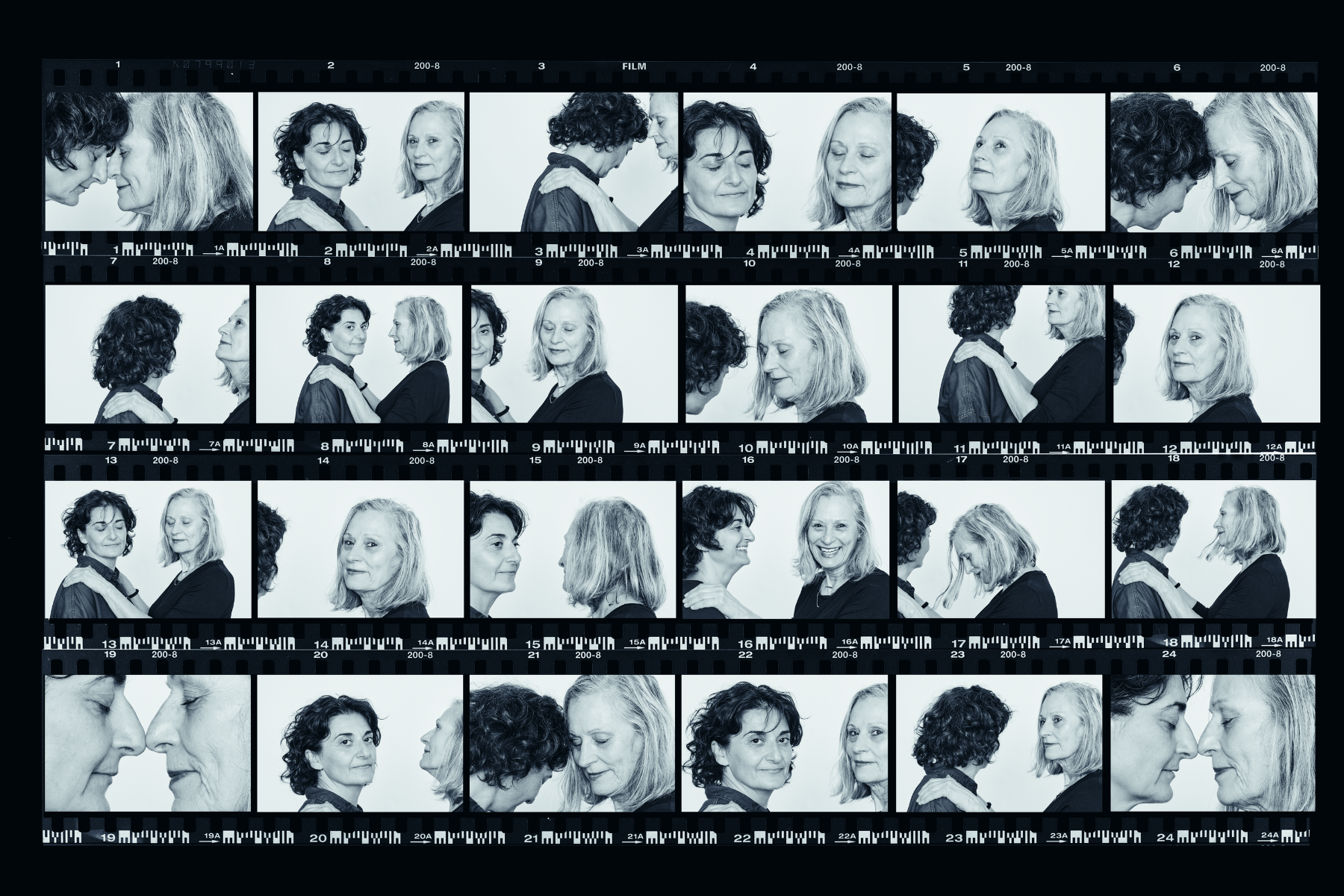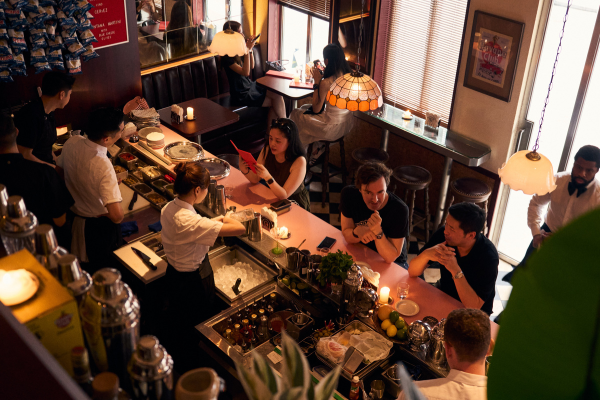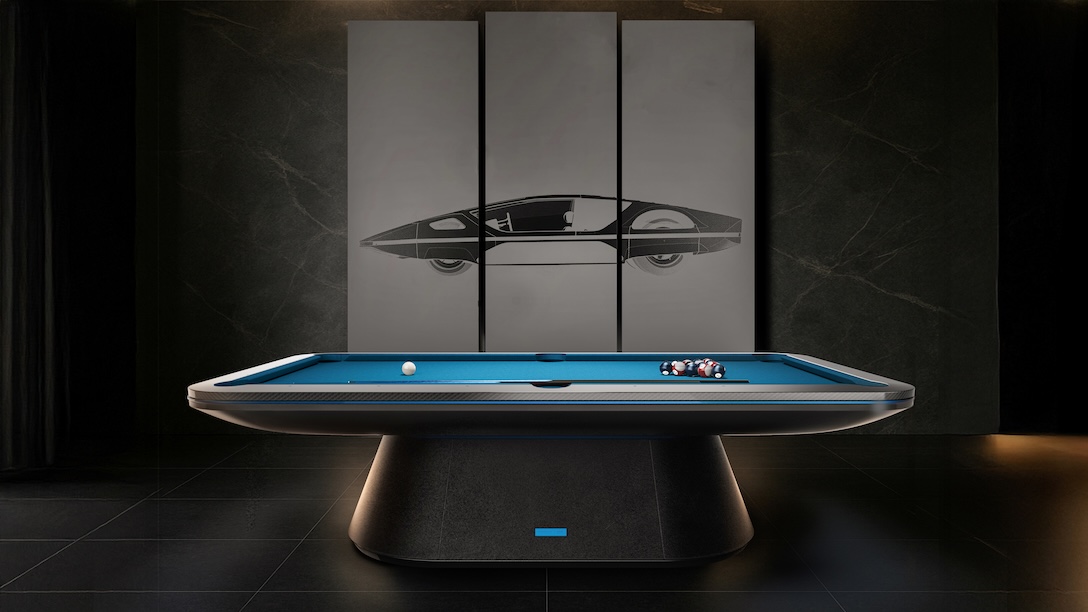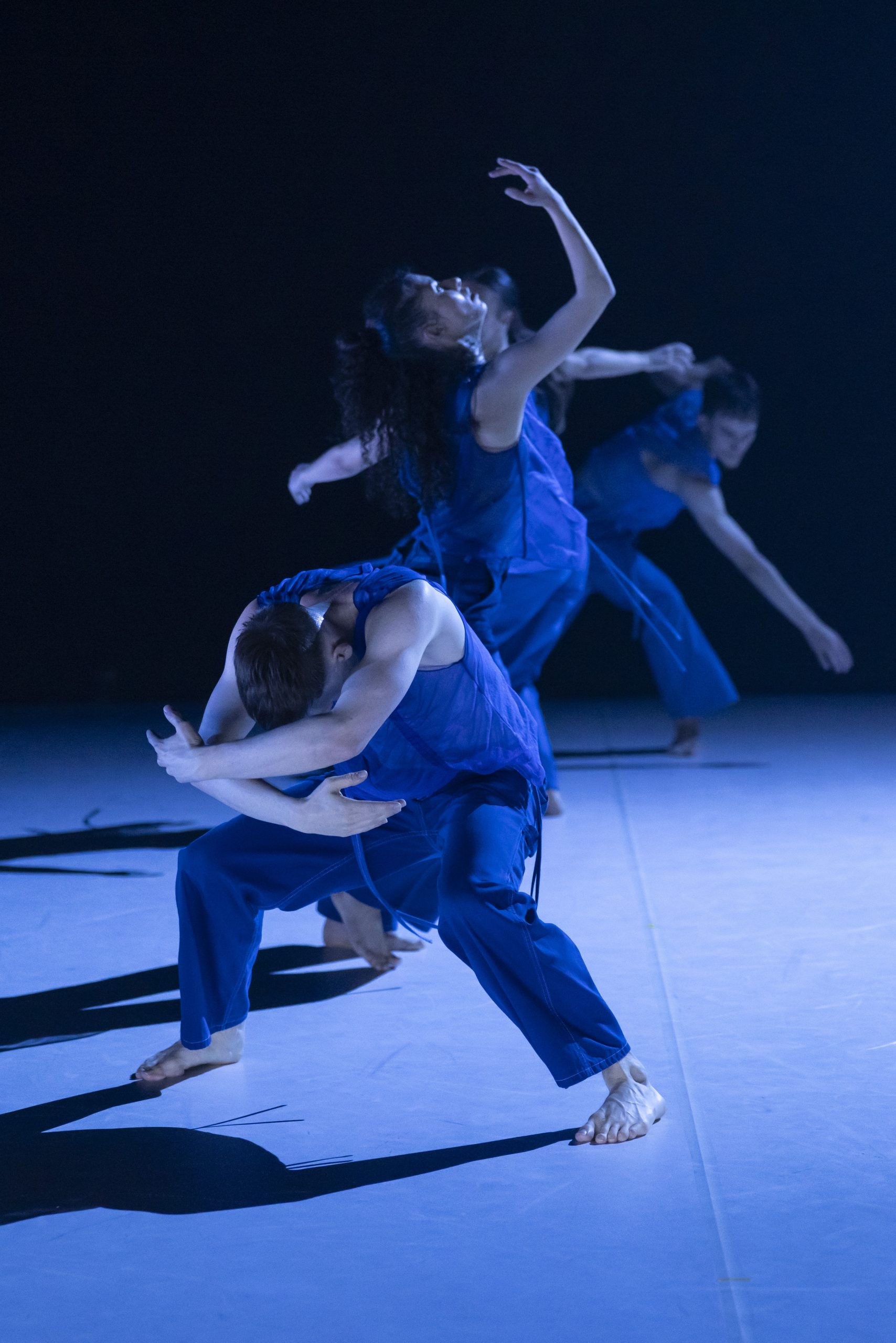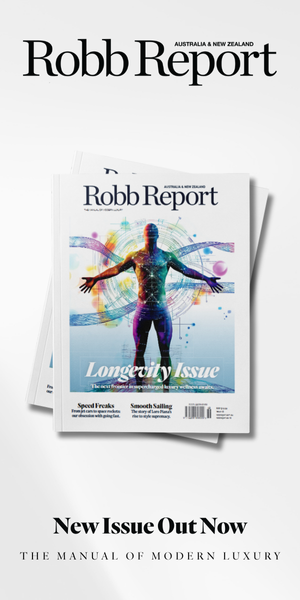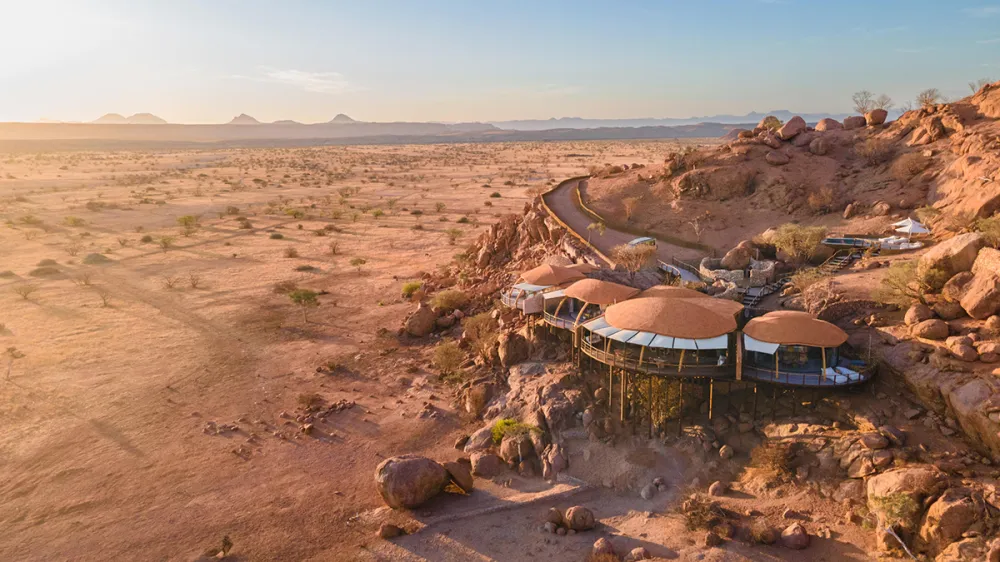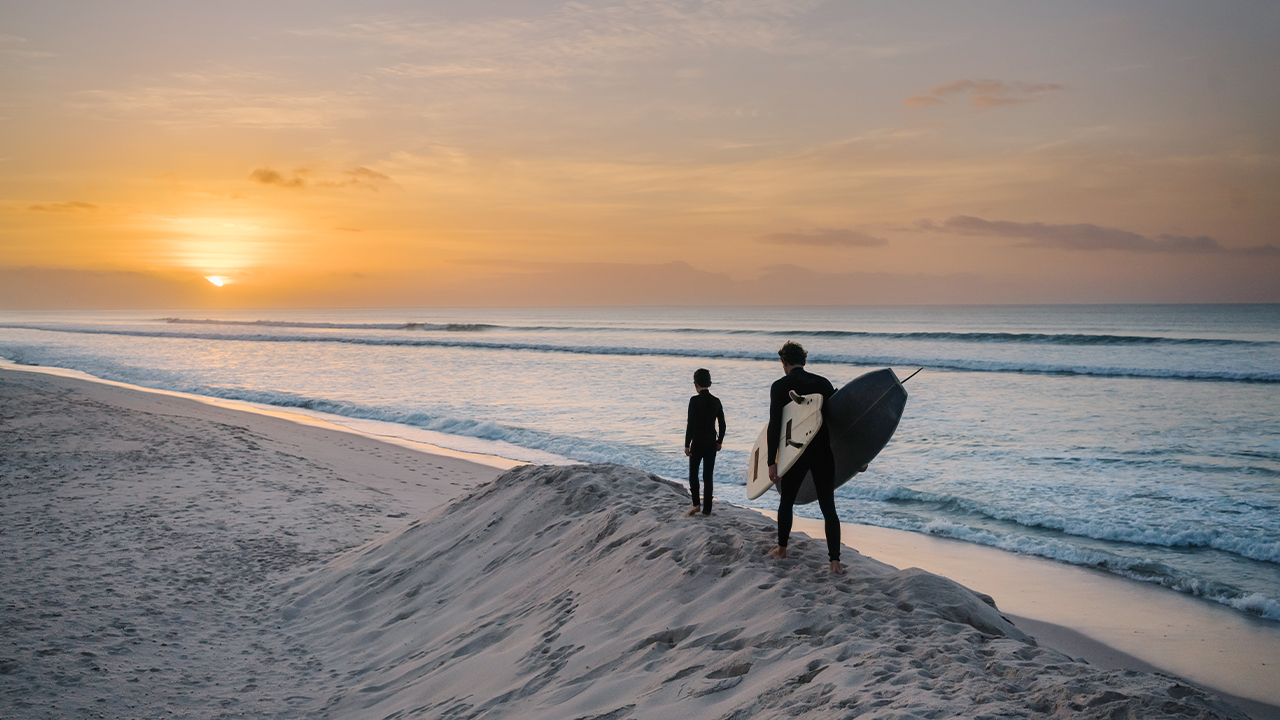
Going to E11even
Miami’s E11even is no ordinary nightclub. The hedonistic spot has spawned residential towers, its own vodka brand and a global cult following. And now, incredibly, there’s talk of creating an entire new district in its image.
Related articles
It’s close to 3.00 am on the Friday before Formula 1 weekend in Miami, and the nightclub known as E11even is heaving. At the owner’s table, just above the dance floor, managing partner Dennis DeGori is showering the crowd below with stacks of cash. “Make it rain,” he says, demonstrating the proper tossing technique so the bills scatter high and wide. Thousands of singles carpet the floor already.
Waitresses hoist magnums of Dom Pérignon, cutting a path through VIPs in the pit. These guests shelled out extravagantly for a prime spot in the club’s throbbing centre. This weekend, the most coveted tables—which encircle an elevated stage, a dance floor, and the DJ booth—will require a minimum tab of US $30,000 (around $46,000) apiece for booze, food, and entertainment. Unlike at most venues, the big spenders here aren’t roped off along the periphery. “I flipped the usual formula,” DeGori says. “At E11even, everyone else is a spectator to the VIP experience.”
A pair of acrobats suspended from ropes contort above the dance floor, their routine pausing the smoke-machined, laser-beamed, strobe-battered madness. Drones buzz around the room, filming everything for the post-party highlight reel.
Just after 4.00 am, DJ Deadmau5—the electronic-dance-music (EDM) superstar who often sells out stadiums—begins his set, filling the 1,250-square-metre club with pulsing sound, the LED eyes of his signature mouse helmet glowing green. Large frosted bottles of E11even-brand vodka are crammed into ice buckets everywhere. Go-go dancers, clad only in race-car helmets and body paint applied to look like F1 driver uniforms, flank the DJ booth. Other young women in lingerie are gyrating on platforms throughout the room. In the middle of it all, a “massage girl” offers head rubs. Down in the pit, a bride-to-be celebrates with friends, flipping back her white veil.
The party rages on well past dawn, as it will the next night, when rapper Travis Scott headlines, and the night after that, when another star, DJ Tiësto, will whip the crowd into a frenzy. The club will earn millions in just three or four days. And night after night, long lines of hopefuls will wait hours to get in, paying anywhere from US$350 to US$100,000 for a table, depending on who’s performing—and the location of that table.
In the decade since it opened its doors in downtown Miami, E11even has transcended the space most nightclubs occupy to become a full-fledged phenomenon, with a cult following and vast global reach. In 2023, E11even-hosted parties popped up at the Cannes Film Festival and the Monte Carlo Grand Prix, exporting the club’s particular brand of unbridled excess as they’d done previously at seven Super Bowls and the 2018 World Cup, in Moscow. Recently, management has been scouting locations for new clubs in Tokyo, London, New York City and Las Vegas. “We’ve had a ton of offers, but it has to be right,” DeGori says.

COURTESY OF E11EVEN
E11even is an unlikely sensation, mixing the risqué, somewhat tawdry, world of bachelor-party lap dances and dollar bills stuffed into G-strings with A-list musical acts and Cirque du Soleil–style theatrics, all packaged with plush gold banquettes and a bone-rattling sound system. It’s an oddly seamless mash-up of manic luxury and sexually charged hedonism, fuelled by large-format bottles of Champagne, vodka and tequila. “It’s many different things to many different people,” says DeGori. “To explain how it works together—you can’t do it.”
Over the years, E11even has spawned brand extensions in music and vodka and NFTs, in millions of dollars in merchandise—mostly US$50 baseball hats—and in the billion-dollar real-estate developments rising on the lots around the club. The 213-metre, 65-storey E11even Residences condo-hotel tower is under construction across the street and expected to open in two years, with interiors from NYC firm AvroKO. A 1,860-square-metre poolside day club will overlook E11even’s new rooftop restaurant, Giselle, a fitting showcase for chef Gustavo Zuluaga’s maximalist cooking. His more-is-definitely-more menu pairs toro-tartare cones, lobster thermidor and wagyu beef tomahawk steaks with a thumping beat. A second, equally tall tower called E11even Residences Beyond will follow, connecting to the first by skybridge; a third is planned for just up the street.
11EVEN might be the first nightclub anywhere to birth a residential tower, which is not all that surprising when you consider its roots. The club’s origins go back to the early 2000s, when co-founder Marc Roberts—a former sports agent from New York who had worked with heavyweight boxing champ Shannon Briggs and NFL star Tyrone Wheatley—began buying land in South Florida. Entering the real-estate- speculation game, he set his sights on Miami’s mostly desolate Park West neighbourhood, snapping up as many abandoned buildings and vacant lots as he could. Roberts didn’t know what the area, tucked between Miami’s Design District and the luxury enclave on the waterfront at Brickell, might eventually become, but he was willing to bet it would be worth a fortune one day. “I just knew it was the best land in Miami,” he says.

ADINAYEV/RENDERS ARX SOLUTIONS
Attempts to transform the area into a 24-hour entertainment district, bringing a bit of Las Vegas into central Miami, had mostly fizzled out by 2012, when Roberts began angling to acquire the Gold Rush, a strip club with a rare 24-hour license to serve alcohol and host nude entertainment, abutting plots he’d already bought. Roberts guessed owner Jack Galardi, an octogenarian gentlemen’s-club mogul known to be a shrewd and intractable businessman, would drive a hard bargain—if he could be persuaded to sell at all.
“Everybody said, ‘That’s the golden piece—of everything you assembled, you’re not getting that. Nobody will get that. He’s not selling, ever,” ‘recalls Roberts. Worried his reputation as a real-estate player might drive up the price, Roberts refrained from approaching Galardi directly. Instead, he sent in a “beard”, a young restaurateur who found Galardi in the hospital, dying of cancer. “I always use a beard,” says Roberts. “I’ve done maybe 60 deals in this neighbourhood; they hear my name, they think it’s lottery time.” The stand-in outlined fantastical plans for a celebrity-backed restaurant—with just enough star power to make it interesting. “I sent my good buddy, he had a little restaurant, just a little guy,” says Roberts. “He said, ‘I want to buy this with an athlete, he’s really hot on it, we better act quick.’ ” Roberts says he even convinced a former client from his sports-agent days (he won’t say who) to lend their name to the ruse.
In the weeks after the Gold Rush deal closed for US$11.9 million, news reports began trumpeting developments coming to Park West and its environs. All at once, a number of long-debated infrastructure improvements were announced: the neighbourhood wasn’t on its way to becoming a new Las Vegas Strip, exactly, but suddenly a train station, a mega-mall (which Roberts had been attached to early on), and a highway extension were all in the works. The value of the land soared overnight.
Roberts and his actual partner on the Gold Rush deal, Michael Simkins—a young power player on the Miami real-estate scene with deep roots in the community (his industrialist father, Leon, had been a major local philanthropist)—decided to keep the strip club going as a revenue source while they considered the fate of the site. They hired a consultant to help locate a third party to run the place for them. “Every strip-club operator in the world contacted us,” says Roberts. “We were the prettiest girl at the prom.”
Rather than partner with any of them and fork over the bulk of the profits, Roberts and Simkins decided to build their own management team. They flew in DeGori, who’d spent more than 30 years running clubs and who came widely recommended, from Vegas. DeGori had opened dozens of venues across the country for his mentor Michael J. Peter—the founder of the Solid Gold and Pure Platinum brands who is sometimes called the godfather of the modern gentlemen’s club—before launching his own spots, including Scores Chicago and the Penthouse Club in Las Vegas. Instead of simply taking over the Gold Rush, DeGori suggested replacing the club with a new sort of hybrid nightlife model, mixing elements of a gentlemen’s club, a classic dance club and a live-music venue. It was an audacious idea, and one he’d been toying with for decades. “I thought, ‘I can put everything together, and it will be spectacular,’ ” he says.
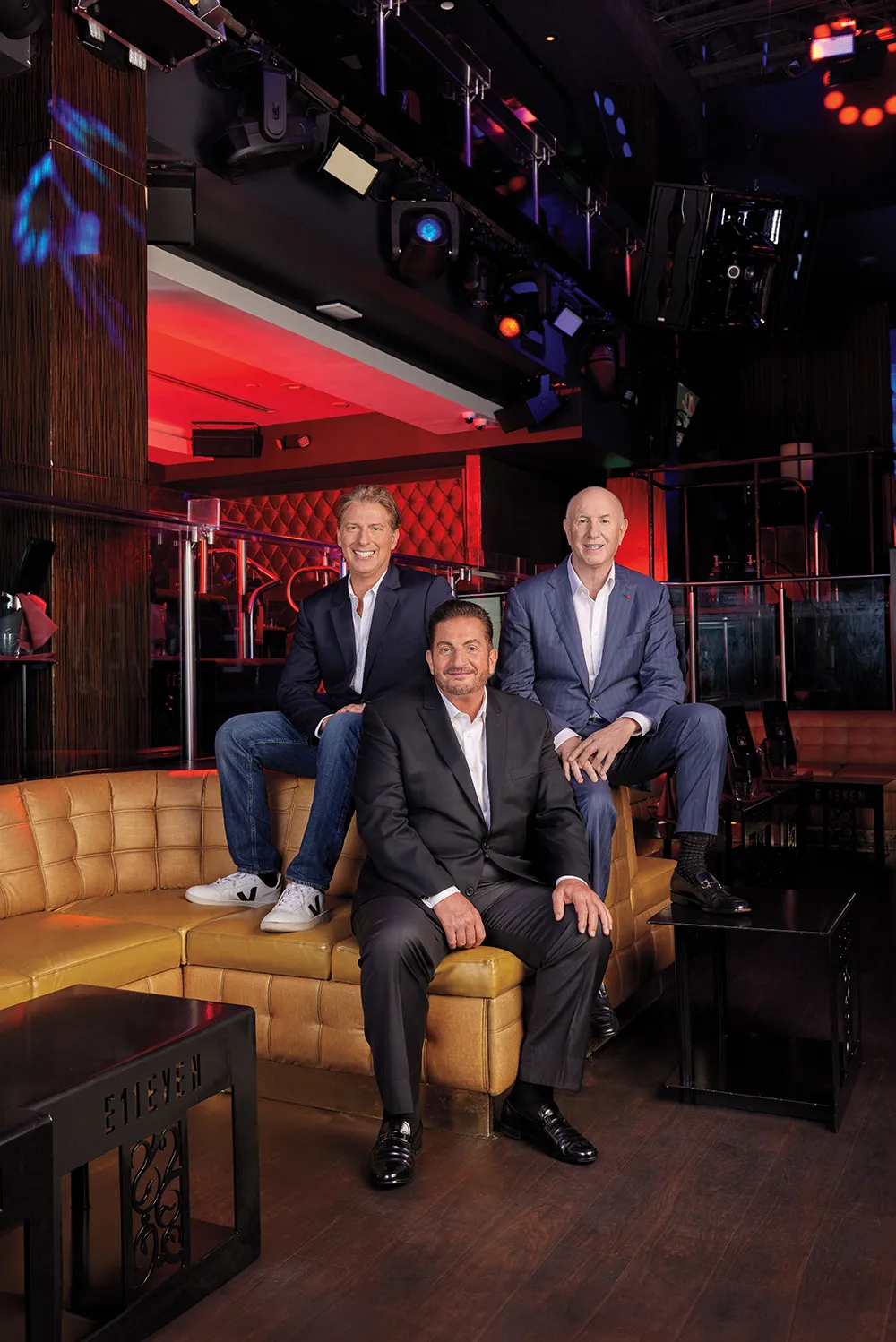
JEFFERY SALTER
Roberts and Simkins, seduced by DeGori’s vision, brought him on board as a partner. Together they began developing plans, eventually gutting the building down to its exterior walls. (To retain the valuable 24-hour license, the club itself couldn’t get any bigger than its original 1,250 square metres.) Simkins told friends he believed it “would be one of the top-five most successful nightclubs in the United States after it opened.” They had their doubts.
“I’m spending all this money and I’m telling people this, and it’s in this neighbourhood no one is really visiting—it was totally off the radar—and they all thought it would be out of business within a year,” Simkins says.
DeGori—who, despite the whole “Make it rain” thing, describes himself as reserved and behind-the-scenes—began assembling a dream team, a sort of Ocean’s Eleven heist crew to help him execute his plan for the club, luring high-powered operating partners, many from Las Vegas, with generous offers.
“Moving bonus, signing bonus—I felt like a first-round draft pick,” says Gino LoPinto, a veteran of the after-hours-club scene in Vegas who came on as the gregarious front man in charge of marketing and talent booking. Daniel Solomon, who had helped Marquee, in Vegas, become the highest-grossing dance club in the country after rising to become the youngest general manager in the Tao group at 25, brought his deep contacts in the EDM scene. A VIP wrangler named Rob Crosoli made the move from Chicago. Even security chief Derick Henry, who had done protection work for Prince, the Jonas Brothers and Mary J. Blige, got a piece of the business. “In a club like this, security is huge,” says DeGori.

COURTESY OF E11EVEN
As what would turn out to be a US$44 million build-out continued, the owners and managing partners brainstormed ideas for a name. They wanted something open-ended, vague, hard to define. It wasn’t a classic dance club, concert venue, lounge or cabaret theatre. It was all of those things, and none of them.
The address was on 11th Street. DeGori, whose daughter had just turned 11, began seeing the number everywhere. “I really like it, because it says nothing,” he explains. They couldn’t trademark a number, but a distinctive spelling, E11even, would work. In the build-up to opening, they erected cryptic billboards across Miami. “Whatis11.com” followed by “It is what you think it is.” According to LoPinto, “We never explained what it was.”
A pre-opening party, announced in the New York Post, doubled as a casting call for “60 sexy beach bodies” to appear in the Entourage movie—the film’s writer-director, Doug Ellin, was an old friend of Roberts’s. Invitations to other launch festivities, sent to several hundred VIPs, arrived in black boxes that played opera music when opened. Inside was a gold mask and a silver key to the club. “We sent one to Steve Wynn, to Trump, to a lot of people we knew wouldn’t come,” says LoPinto. Another list, of people more likely to show up and spend money, received an American Express–style black card loaded with US$11,000 in credit to be used during the club’s first year in business.
E11even, billed as the “world’s first and only 24/7 Ultraclub,” was originally open non-stop seven days a week. (Hours were later curtailed by the pandemic, and now the club is open around the clock from only Wednesday to Monday.) The first few months were a struggle. “We were bleeding money,” says Roberts, “and then all of a sudden, it just started clicking.” Soon, celebrities began showing up. Leonardo DiCaprio made an early appearance. One night, Miley Cyrus jumped onto the pole in the middle of the pit. Idris Elba moonlighted in the DJ booth.

COURTESY OF E11EVEN
After Usher performed during the club’s first New Year’s Eve, E11even began booking some of the biggest names in hip-hop and electronic music, from Diplo to DJ Marshmello, Cardi B. to Snoop Dogg. Drake, who rang in the New Year in 2016, was the first artist to perform in the pit, surrounded by fans, pioneering the up-close-and-personal staging that has since become a hallmark of E11even at its wildest. (Altogether, Drake has played the club seven times.)
For the first few years, as the business’s fortunes began soaring, Roberts and Simkins remained mostly hands-off—more landlords than operators. Simkins, active in the civic affairs of his Miami Beach community, worried about the reputational risk of attaching his name to the club and the potential strain on his marriage. His wife, Nikki, who’d been his high-school sweetheart, “was freaked out,” he says. “It was one thing to buy it and lease it, which she was on board for, but this shift into partnering on the business was heavy for her. So certain promises were made… that I would only go to the club with her, and that was the rule for the first six years.”
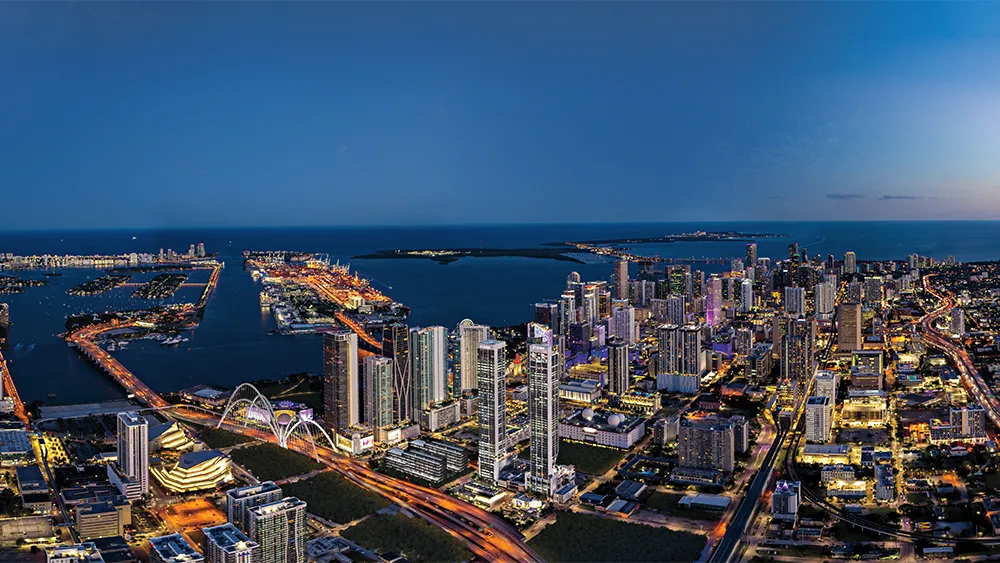
COURTESY OF E11EVEN
But as the cult of E11even soared, the stigma soon faded. “People were connecting emotionally with the brand, superfans were developing,” Simkins says. Eventually Nikki, a former diamond dealer, took on a role in the business herself, helping to launch the club’s vodka, produced in Florida under the E11even label, as CEO of the brand’s spin-off company.
The E11even management team, always quick to capitalise on new trends, jumped on the cryptocurrency craze early on, as Bitcoin mania engulfed Miami during the rise and fall of Sam Bankman-Fried’s house-of-cards exchange, FTX. E11even became the first nightclub in the country to accept Bitcoin. During Miami’s inaugural Bitcoin Conference, the club was often packed with big spenders flashing their crypto wallets. E11even even sold a special diamond-encrusted Bitcoin hat for US$50,000.

In late 2021, the company spent nearly US$400,000 acquiring a Bored Ape Yacht Club NFT—No. 11, of course. (The value of Bored Ape NFTs has since plummeted.) E11even’s Ape became the new mascot and the launching pad for a label, E11even Music, run by LoPinto. (It later released a track from a new EDM artist, 11Ape, an in-house creation who performs anonymously wearing a Bored Ape mask.) In the spring of 2022, the club released its own collection of 1,111 NFTs. Buyers were granted membership in the E11even Captain’s Club and special access to the facilities, among other perks, for 3 ETH (about US$7,900 at the time).

COURTESY OF E11EVEN
The halo effect of an unforgettable evening may help explain why so many of the club’s business partnerships have succeeded. Real-estate developer Ryan Shear, principal of PMG, which has built many condo towers in Miami and New York, was having a big night out at E11even a few years ago when he asked to meet Roberts, who was seated upstairs at his usual table overlooking the pit. Soon they were tossing around ideas for an E11even high-rise on the land Roberts and Simkins owned across the street. “We’d kill it,” said Roberts, selling the proposal hard.
A few meetings later, Simkins and DeGori were in on the deal. Soon the club’s managing partners also signed on, enthusiastic about expanding the debauched spirit of E11even to a much bigger platform. “There’s not really a Vegas-style property in Miami—great beach club, great spa, great food and beverage offerings, 24-hour lobby bar,” says LoPinto of the hybrid condo-hotel plan.

COURTESY OF E11EVEN
The first units went on sale in January 2021, a year and a half before a foundation was poured. All were sold fully furnished, so they could function as hotel rooms when not in use by their owners. A few deep-pocketed E11even fans bought up entire floors. Prospective buyers were tantalised by a whole set of perks, including access to a beach club on South Beach, about a 20-minute drive away, and to the tower’s many amenities, among them a 930-square-metre spa and wellness studio offering Ayurvedic treatments designed by Deepak Chopra (his first residential project), a cigar club and a restaurant. The 449-unit tower, containing everything from US$300,000 studios to US$10 million penthouses, sold out in six months.
A second tower hit the market in late 2021, with plans for condos, a private members’ club, and a helipad on top. Sibling influencers Jake and Logan Paul both reportedly bought penthouse units, with listing prices of US$20.5 million apiece, off-plan. A third tower went on sale a few months later. A fourth isn’t out of the question, says Simkins, once the last one sells out.
“Come back in a couple of years—you’re not going to believe your eyes,” says Roberts, a born salesman, of the partner s’plans to transform the area surrounding the club into one massive brand extension. Recently, they have started referring to it as District E11even. “This is a whole new city,” he says. “This will be the most famous entertainment street in the world when we’re done with it.” ●
Click here to subscribe to Robb Report ANZ.
Subscribe to the Newsletter
Recommended for you
Double-Vision
What happens when Australia’s most compelling artists turn their gaze on each other? The answer is Artists by Artists, a striking new book from Arts-Matter founders Michelle Grey and Susan Armstrong.
October 27, 2025
My Hong Kong
As the buzz around the East Asian cultural mecca amplifies, who better than two savvy, on-the-ground locals to curate an insider’s guide to the city’s essential experiences.
October 27, 2025
You may also like.
29/09/2025
You may also like.
Radek Sali’s Wellspring of Youth
The wellness entrepreneur on why longevity isn’t a luxury—yet—and how the science of living well became Australia’s next great export.
Australian wellness pioneer Radek Sali is bringing his bold vision for longevity and human performance to the Gold Coast this weekend with Wanderlust Wellspring—a two-day summit running 25-26 October 2025 at the RACV Royal Pines Resort in Benowa. Sali, former CEO of Swisse and now co-founder of the event and investment firm Light Warrior, has long been at the intersection of wellness, business and conscious purpose.
Wellspring promises a packed agenda of global thought leaders in biohacking and longevity, including Sydney-born Harvard researcher David Sinclair, resilience pioneer Wim Hof, performance innovator Dave Asprey and muscle-health expert Gabrielle Lyon. From immersive workshops to diagnostics, tech showcases, and movement classes, Sali aims to make longevity less a niche pursuit for the elite and more an accessible cultural shift for all. Robb Report ANZ recently interviewed him for our Longevity feature. Here is an edited version of the conversation.
You’ve helped bring Wellspring to life at a moment when longevity seems to be dominating the cultural conversation. What drew you personally to this space?
I’ve always been passionate about wellness, and the language and refinement around how we achieve it are improving every day. Twenty years ago, when I was CEO of Swisse, a conference like this wouldn’t have had traction. Today, people’s interest in health and their thirst for knowledge continue to expand. What excites me is that wellness has moved into the realm of entertainment—people want to feel better, and that’s something I’ve always been happy to deliver.
There are wellness retreats, biohacking clinics, medical conferences everywhere. What makes Wellspring different?
Accessibility. A wellness retreat can be exclusive, but Wellspring democratises the experience. Tickets start at just $79, with options up to $1,800 for a platinum weekend pass. That means anyone can learn from the latest thought leaders. Too often in this space, barriers are put up that limit who can benefit from the science of biohacking. We want Wellspring to be for everyone.
You’re not just an organiser, but also an investor and participant in this field. How do you reconcile passion with commercial opportunity?
Any investment I make has to have purpose. Helping people optimise their health has driven me for two decades. It’s satisfying not just as an investor but as an operator—it builds wonderful culture within organisations and makes a real difference to people’s lives. That’s the natural fit for me, and something I want to keep refining.
What signals do you look for in longevity ventures to separate lasting impact from passing fads?
A lot of what we’re seeing now are actually old ideas resurfacing, supported by deeper scientific research. My father was one of the first in conventional medicine to talk about diet causing disease and meditation supporting mental health back in the 1970s. He was dismissed at first, but decades later, his work was validated. That experience taught me to look for evidence-based practices that endure. Today, we’re at a point where great scientists and doctors can headline events like Wellspring—that’s a huge cultural shift.

Longevity now carries a certain cultural cachet—its own insider language and status markers. How important is that to moving the field forward?
Health is our most precious asset, and people have always boasted about their routines—whether it’s going to the gym, doing a detox, or training for a marathon. What’s different now is that longevity practices are gaining mainstream recognition. I see it as something to be proud of, and I want to democratise access so everyone can ride the biohacking wave.
But some argue that for the ultra-wealthy, peak health has become a kind of luxury asset—like a private jet or a competitive edge.
That’s short-sighted. Yes, there are extremes, but most biohacking methods are accessible and inexpensive. Look at the blue zones—their lifestyle practices aren’t costly, yet they lead to long, healthy lives. That’s essential knowledge we should be sharing widely, and Wellspring is designed to do that in an engaging way.
Community is often cited as a key factor in healthspan. How does Wellspring foster that?
Community is at the heart of it. Just as Okinawa thrives on social connection, we want Wellspring to be a regular gathering place where people uplift each other. Ideally, it would become as busy as a Live Nation schedule—but for health and wellness.
Do you worry longevity could deepen class divides?
Class divides exist, and health isn’t immune. But in Australia, we’re fortunate—democracy and a strong equalisation process help maintain quality of life for most. Proactive healthcare, like supplementation and lifestyle changes, isn’t expensive. In fact, it’s cheaper than a daily coffee. That’s why we’re one of the top five longest-living nations. The opportunity is to keep improving by making proactive health accessible to everyone.
Some longevity ventures are described as “hedge-fund moonshots.” Others, like Wellspring, seem grounded in time-tested approaches. Where do you stand?
There’s value in both, but I’m more interested in sensible, sustainable practices. Things like exercise, meditation, and community-driven activities are proven to extend life and improve wellbeing. Technology can support this, but we can’t lose sight of the human elements—connection, balance, and purpose.
Finally, what role can Australia—and Wellspring—play in shaping the global longevity conversation?
The fact that we can put on an event like Wellspring, attract world-leading talent, and already have commitments for future years says a lot. Australia is far away, but that hasn’t stopped great scientists and thinkers from coming. We’ll be here every year, contributing to the global conversation and, hopefully, helping more people extend their healthspan.
You may also like.
‘Continuum’ Opens to Rave Applause at Sydney Dance Company
Rafael Bonachela’s latest curatorial triumph premiered last night at the Roslyn Packer Theatre, dazzling audiences with its emotional range and fearless physicality.
Sydney Dance Company opened its latest season with Continuum, a triple bill that reminds audiences why the ensemble remains Australia’s most compelling cultural export. Receiving a standing ovation at its premiere last night at the Roslyn Packer Theatre, the program unfolds as an elegant meditation on movement and metamorphosis—three distinct choreographic visions held together by Rafael Bonachela’s curatorial precision and instinct for contrast.
Stephen Page’s Unungkati Yantatja – one with the other breathes land, sea, and sky into motion; Tra Mi Dinh’s Somewhere between ten and fourteen lingers in the tender light between day and night; and Bonachela’s own world-premiere Spell delivers the evening’s visceral heartbeat. Together they trace the continuum of life itself—fluid, volatile, and impossible to pin down. Running through 1 November, the production affirms Bonachela’s vision of dance as “an ever-evolving conversation between artists, audiences, and the world around them.” Robb Report ANZ recently caught up with Bonachela.
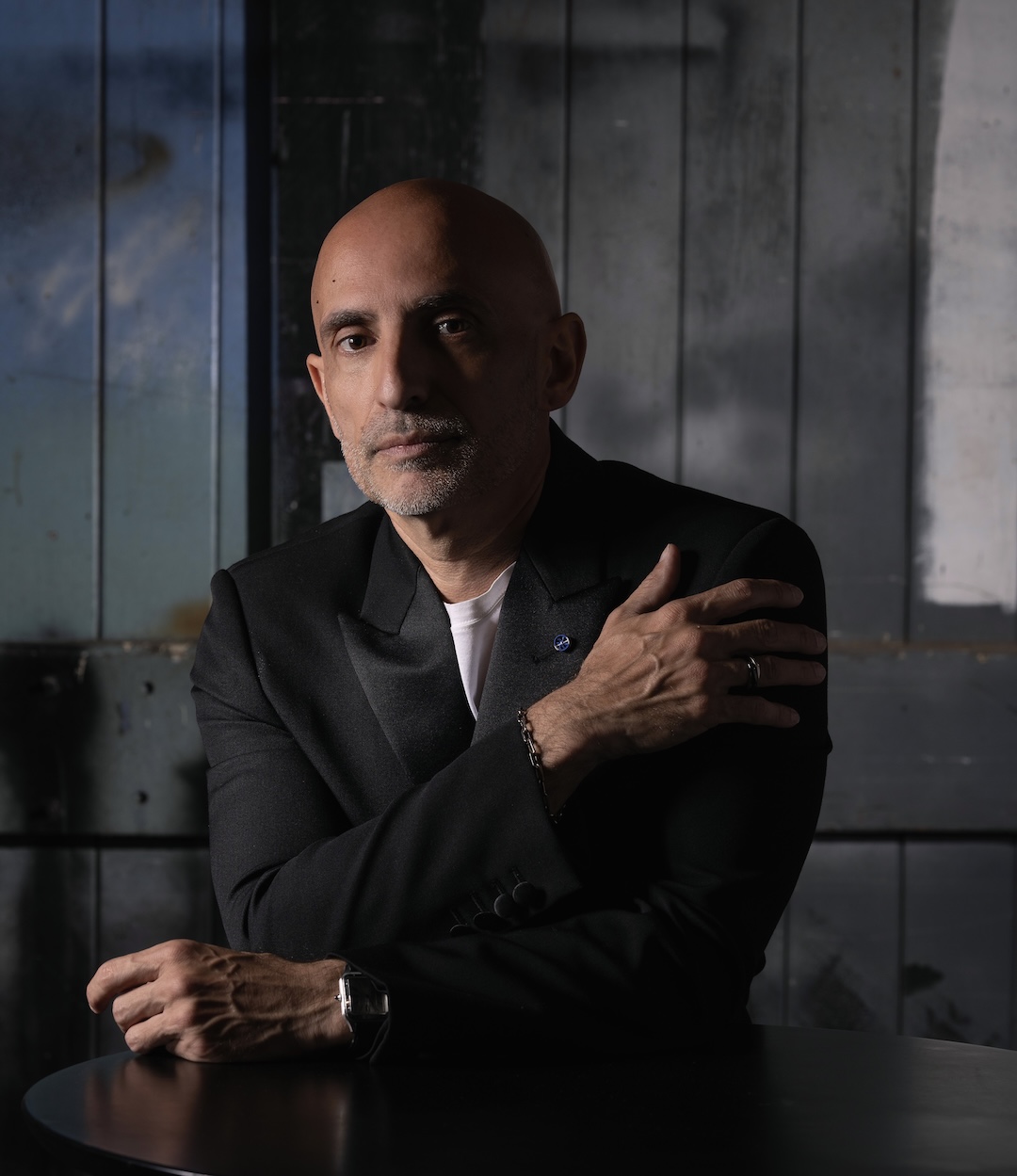
Continuum is described as “a bold exploration of the ever-shifting cadence that binds us to the world.” How did this idea of constant transformation influence your choreographic choices in Continuum?
I’ve curated this evening as an invitation for audiences to experience dance as an ever-evolving conversation—between past and present, between the individual and the collective, and between diverse artistic voices. My intention with this program is to spark connection, curiosity, and reflection, offering works that challenge, move, and inspire while revealing the transformative power of the body in motion.
Each choreographer brings a distinct perspective, yet all share a commitment to exploring the body in motion as a vessel for transformation. Through contrasting aesthetics, cultural resonances, and shifts in time, these works reveal how dance exists on a continuum—where moments build upon one another, find new meanings in fresh contexts, and affirm the enduring power of the human form to express what words cannot.
You’ve created the world premiere Spell within Continuum, which explores “the limits of emotional and physical expression.” What did you aim to conjure emotionally and physically through Spell, and how does it dialogue with the other works in the triple bill?
The title Spell itself suggests a duality—it can be something magical, but also something we fall under without even realising. Emotionally, I want to evoke an atmosphere that is at once intimate and volatile, where vulnerability and power exist side by side. There’s a ritualistic quality to the work, as if the dancers are caught inside a force they cannot quite escape—and it’s that tension which drives the movement and fuels the piece.
Within Continuum, Spell emerges as an intense, visceral heart—both contrasting with and speaking to the other works. While it shares the evening’s theme of transformation, it explores it through a lens of emotional ignition and fearless physicality.
In crafting Continuum, how did you balance moments of intimacy and expansiveness—especially when layering live elements like music and immersive lighting—to evoke that ebb and flow of life’s narratives?
In Continuum, each choreographer works with complete artistic freedom, without any direction from me. That independence brings out authentic contrasts and unexpected connections between the works. It’s this variety that invites audiences to engage on their own terms, discovering personal meanings and emotional threads that are unique to each viewer.
This triple bill seems to offer a journey through time and place—from twilight’s fleeting beauty to elemental breath. How do you want audiences to experience—and perhaps rethink—the relationship between movement, nature, and storytelling?
I always want audiences to come with an open mind and allow the experience to be unprescribed free to discover their own meanings and narratives. Dance has the unique power to be felt as much as it is seen, to resonate physically and emotionally in ways words can’t. I hope audiences leave with a renewed sense of how deeply movement is connected to the natural world, and how it can tell stories without language. Like nature, this evening is always in motion—emerging, transforming, and fading—so that each work becomes a landscape the audience can journey through, sensing their own place in the continuum of life
Looking ahead, does Continuum carve out a new direction or personal milestone for your artistic trajectory? What might this signal for your future choreographic explorations?
Continuum feels like both a culmination and a starting point. It gathers threads from my past work, my fascination with transformation, my love of collaboration, my search for emotional truth and weaves them into something that opens new doors.
Creating and curating this triple bill has changed how I see works interacting—how contrasting voices can strengthen shared themes. It’s inspired me to explore even more fluid boundaries between ideas, styles, and disciplines.
If it signals anything for the future, it’s that I’m interested in going further into that space where dance is not just movement, but an ongoing conversation—between artists, between forms, and between audiences and the world around them.
Continuum runs through November 1 at the Roslyn Packer Theatre.
You may also like.
Inside the $30 Billion Obsession Among the Ultra-Wealthy : A Race to Live Longer
The pursuit of an extended life has become a new asset class for those who already own the jets, the vineyards, and the art collections. The only precious resource left to conquer, it seems, is time.
If you want to know what the latest obsession is these days among the ultra-wealthy, listen in at dinner.
Once it was crypto, then came AI and psychedelics, now it’s longevity all the time. The talk is of biomarkers, NAD+ levels, and methylation clocks, of senolytics and stem cells. Guests compare blood panels like wine lists, and the most important name to drop is no longer your banker or contact at Rolex but your longevity physician. For those just arriving at the conversation, the new science can sound like science fiction—but it’s fast becoming the lingua franca of money.
The field has its own vocabulary—epigenetic reprogramming, which aims to reset cellular clocks; cellular senescence clearance, the removal of “zombie” cells that clog our systems as we age; precision gene therapies, designed to personalise interventions at the level of DNA—that sounds equal parts Brave New World and Wall Street pitch deck. But make no mistake: this is no longer a niche pursuit. The sector is already worth an estimated $30 billion globally and projected to surpass $120 billion within the decade, having attracted billions in investment from the likes of Altos Labs, Juvenescence and Google-backed Calico. Tech titans and old-money families alike are staking claims on the possibility of an extra decade or two. It’s a space where venture funds court Nobel laureates, hedge funds bankroll gene-therapy moonshots, and even wellness festivals in Australia draw rock-star scientists to the stage.
The Poster Child and the Pitch
David Sinclair, the Sydney-born Harvard geneticist who has become something of a poster child for the field, is quick to underline the stakes. “We’re not just talking about lifespan, we’re talking about health span,” he tells Robb Report. “Extending the number of years people live well—without frailty, without disease—isn’t just a medical breakthrough. It’s a social and economic one.” Sinclair, whose research ranges from NAD boosters to epigenetic age-reversal therapies, has calculated that adding a single year of healthy life to the US population, for example, could be worth $38 trillion in economic benefit—fewer years of costly aged care, less burden on hospitals, more years of productivity and compounding returns. In other words, the dividends of health are financial as well as personal. “That’s why governments and investors are paying attention,” he says.
Sinclair has become a fixture on the global circuit, drawing crowds that rival TED or Davos. As Radek Sali, the Australian entrepreneur behind the new Wanderlust Wellspring longevity festival taking place on the Gold Coast this October, where Sinclair is the keynote speaker, puts it: “Wellness has moved into the realm of entertainment.” At Wellspring, platinum-tier guests pay up to nearly $2,000 for the privilege of hearing scientists and investors share the stage over a weekend like headliners at Coachella.
Investing in Time
And then there are the sideshows. Bryan Johnson, the tech mogul turned human guinea pig, makes headlines with his open-source, organ-by-organ data tracking—his infamous “penis readings” have become cocktail-party fodder. While many dismiss him as a parody of the field, his multimillion-dollar project Blueprint has nevertheless made longevity impossible to ignore in the mainstream.
For the uninitiated, the science of longevity today is no longer about vitamin salesmen or fringe dietary regimes. This is the new frontier—one where biology is not just observed but engineered, and where investors smell opportunity on par with space travel. It’s little wonder that Altos Labs has raised billions to chase cellular rejuvenation, or that Juvenescence has secured more than $400 million to fast-track therapies. What was once the realm of eccentric tinkerers now attracts sovereign wealth funds.
“This body takes me to meetings, earns me money—why not invest time and money into it?”
The appeal to the One Percent is obvious. Longevity is a natural extension of portfolio thinking: diversify your assets, hedge your risks, and above all, maximise return on investment. Except in this case, the returns are measured in years of health, energy and cognition. As Andrew Banks, a Sydney-based entrepreneur and early investor in Juvenescence, explains: “This body takes me to meetings, earns me money—why not invest time and money into it?” His Point Piper home teems with contraptions—a Reoxy breathing machine, hydrogen therapy, red-light sauna, and he spends a few hours a day on maintenance, as if his body were a private equity stake.
Banks, like others in his cohort, is baffled that more wealthy men haven’t followed suit. “Entrepreneurs pride themselves on divergent thinking,” he says. “They expand, dream and create businesses with it. But when it comes to their bodies, they’re convergent—unimaginative. The lack of curiosity is astonishing to me.”
Medicine 3.0 and the New Rituals
Steve Grace, a Sydney-based entrepreneur and the proprietor of exclusive private networking club The Pillars, which is opening a longevity program, thinks there is a reckoning coming for those who do not take matters into their own hands. “As someone who has run a few recruitment businesses,” he says, “I can tell you that if you’re a man or woman in your 50s and working as an employee, even in a really good position, it’s time to get worried about job security and being aged out of the workforce. You have to make yourself as vital as possible and become the best version of yourself, or you’re toast.”

What was once fringe has now become a cultural necessity for those who can afford anything, with science finally catching up to ambition. Sinclair’s lab at Harvard recently published a study on the reversibility of cellular ageing—restoring vision in blind mice and setting the stage for human trials in conditions like glaucoma. In Boston, his company Life Biosciences will begin treating patients with blindness in a Phase I trial using partial cellular reprogramming early next year. “This isn’t science fiction anymore,” Sinclair says. “We’re at the point where we can reprogram cells, turn back their biological clocks, and restore function.”
Meanwhile, practitioners like Dr. Adam Brown of the Longevity Institute in the Sydney suburb of Double Bay are reinventing diagnostics. His “assessment menu” has been compared—only half-jokingly—to a Michelin Guide for medical testing: full-body MRI scans, continuous glucose monitors, polygenic risk scores. “What we do is proactive, not reactive,” he says. “Correct deficiencies first, then optimise health. That’s how you get peak performance in the short term and resilience in the long term.” Brown frames longevity in terms that would resonate with any investor: “There’s a short-term ROI—fixing glucose or sleep issues so you perform better tomorrow. And there’s a long-term ROI—functioning in your 70s as you would in your 40s. That’s extending your career, your income potential and your independence.”
“Once upon a time, male vanity meant injectables, veneers and a tan. Today, it’s VO2 max scores and continuous glucose monitor readouts.”
Peter Attia, the Canadian-American physician and podcast host who has helped popularise the concept of “Medicine 3.0”, echoes this emphasis. Medicine 1.0, according to him, was about surviving infections. Medicine 2.0 was about treating chronic disease. Medicine 3.0 is about staying ahead of decline: measuring, monitoring and intervening early. “The goal is not just to avoid disease but to lengthen health span,” Attia has said.
For those already converted, longevity is less about lab science than daily rituals. Sydney-based Chief Brabon, who trains CEOs like athletes, says: “These men are like Formula One cars—you don’t wait until the tyres are bald before swapping them. You keep everything tuned, precise, optimised.”
That tuning now involves more gadgets than ever: hyperbaric oxygen chambers, cryotherapy, sauna/cold-plunge circuits, peptide stacks, nootropics. And yes, a glut of supplements, some with evidence, others little more than wishful thinking. Once upon a time, male vanity meant injectables, veneers and a tan. Today, it’s VO2 max scores and continuous glucose monitor readouts. “Health is the new flex,” as Steve Grace quipped, glancing at his wrist-worn biometric tracker.
The New Flex: Health as the Ultimate Luxury
Still, there is plenty of scepticism. Some therapies are unproven, others prohibitively expensive. And there is the unavoidable fact that many leading scientists, including Sinclair, have stakes in companies producing supplements and therapeutics, raising eyebrows about conflicts of interest. “The difference,” Sinclair insists, “is whether it’s backed by peer-reviewed science and measurable biomarkers. If it can’t be quantified, it’s marketing, not medicine.”
Then there are the contradictions. It promises democratisation while often priced like a private club. It champions science but thrives on hype. It seeks to extend health span but risks deepening class divides. “Only if we let it,” Sinclair says when asked if longevity risks becoming the preserve of the wealthy. “Like antibiotics or aspirin, these advances should become widely available and affordable once they scale.” Sali agrees, but from another angle: “Biohacking doesn’t have to be expensive,” he says. “The blue zones prove that—community, diet, movement, purpose. Those are free. Wellspring is about making that knowledge accessible.”
And yet, for all its shortcomings, the movement is here to stay. Investment continues to pour in. Technology—like senolytic drugs that clear aged cells or AI-driven platforms that predict individual disease risk years in advance—is moving from speculation to clinical trial. Scientists are being recast as influencers. And the wealthy, always in search of the next advantage, have found in longevity a pursuit as old as alchemy, yet dressed in the language of venture capital. The truth is that health has always been an asset. What’s new is that it’s now being traded, optimised and measured like one.
In the end, longevity is less about a moonshot than about curiosity. Banks, Sali, Sinclair, Attia are all, in their own way, betting on time. Perhaps the most radical idea is also the simplest: that the best-performing asset in any portfolio is the body itself. Unlike Bitcoin, it carries you to meetings. Unlike art, it cannot be stored in a vault. Unlike real estate, it is non-transferable.
The new calculus of longevity is the recognition that the ultimate luxury is not wealth or status, but a few more decades of clear thought, strong bones and good company—and the ability to make money off it. Everything else, as one investor put it, is just a rounding error.
You may also like.
How Sailing Shaped Loro Piana’s Most Iconic Designs
Pier Luigi Loro Piana grew his family textile business into a celebrated fashion house by following his passion for sports on land and at sea.
The Regatta Connection
The race village at Port de Saint-Tropez is awash with people in nautical navy and white, the de facto dress code for the Loro Piana Giraglia regatta. This is the second year the fashion house has lent its name to one of the Mediterranean’s most prestigious summer races. The course zooms from the French coast to Genoa, Italy, taking a sharp turn past Giraglia, a small island off Corsica’s northern tip. It’s the latest in a long line of marine events the brand has sponsored, dating back more than 20 years.
The link between sailing and the brand—and more consequentially the Loro Piana family—is exemplified by the man Robb Report is here to meet: Pier Luigi Loro Piana. An avuncular figure in his 70s with the physique of a man who has enjoyed life, Pier Luigi fell in love with sailing in his late teens, when a family friend took him for a cruise in a sloop.
“Using the wind to go faster or slower, driving the boat like it has an engine, it’s really fascinating,” he says. Inevitably, he started competing. “When you’re sailing, you’re always looking for other boats to go and fight with. It’s an instinct,” he says. And then, with considerable understatement, “I think it’s a nice hobby.”
A Life Under Sail
He currently owns two boats: My Song, which you can see on these pages, is a 25 m sailing yacht that competed in the Regatta. There’s also Masquenada, a comfortable 50 m explorer. It’s a commendable set-up befitting a man who shaped one of Europe’s most celebrated fashion houses.
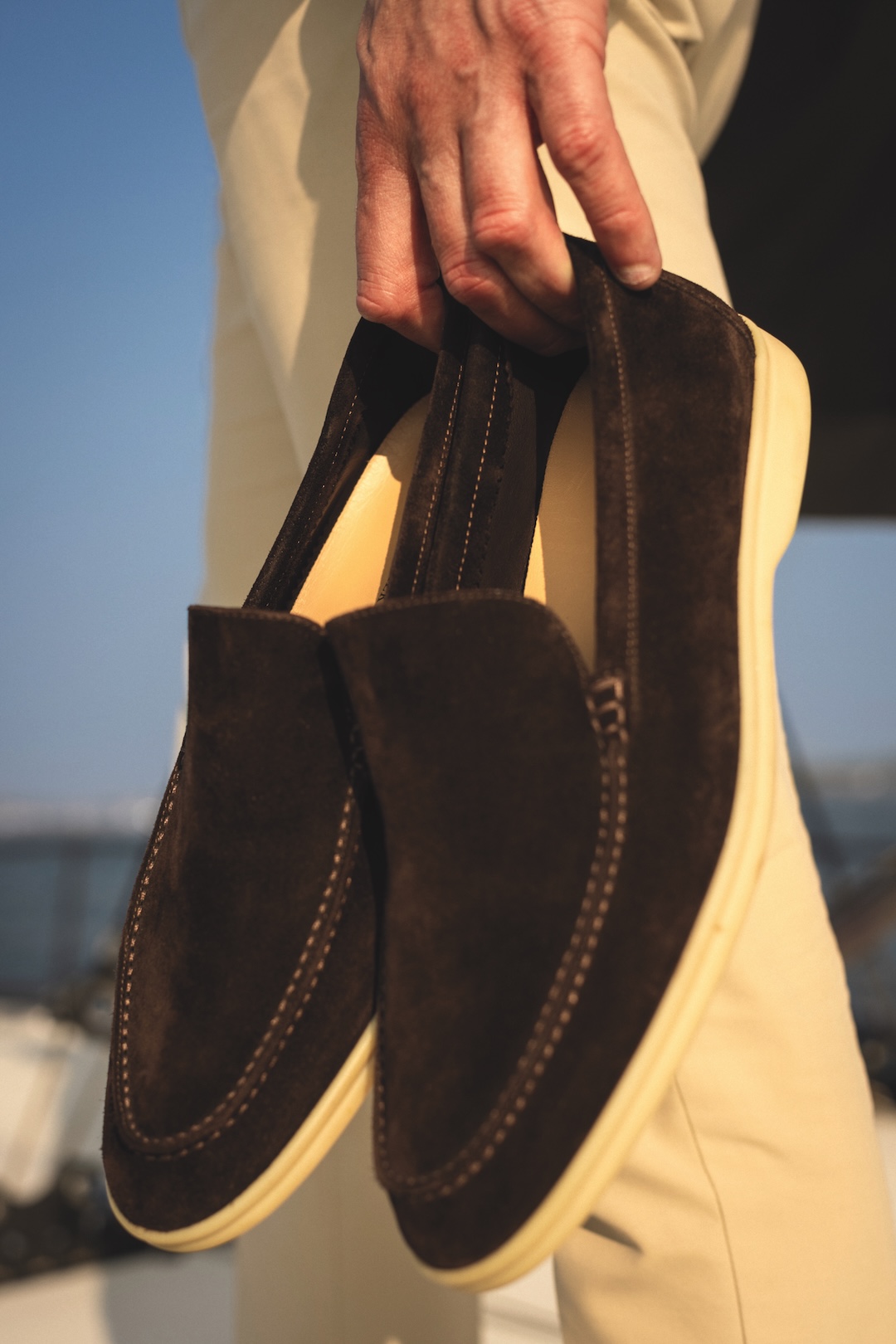
A Family Business Turned Global Powerhouse
The textile and clothing company that bears his family’s name was launched by an ancestor, Pietro Loro Piana, in 1924. A few generations later, Pier Luigi and his brother, Sergio, would run it for four decades until LVMH acquired a majority stake for around $4 billion in 2013. Sergio passed away that year; his widow and Pier Luigi still own a share of the brand between them.
The brothers proved innovative custodians, moving the company upmarket with an insistence on ultra-fine materials and groundbreaking fabrications. And the connection with sports—specifically yachting, horseback riding, skiing and golf—is integral to how the brand positions itself. As Pier Luigi recalls, such associations often had self-serving origins.
“These are the sports my brother and myself were doing,” he says. “We were very committed in business in the 1970s, ’80s, ’90s, so we were like our customers: people that like to work hard but also play hard. And that meant sports.”
Innovation Born of Necessity
This affinity often led them to develop durable, yet elegant, materials and gear for their off-duty pursuits, eventually offering versions to their athletic clientele. “We engineered products with unusual properties, natural fibres like wool or cashmere with a membrane that makes it waterproof and windproof… For research and development, I was the first victim,” he says with a chuckle. Once, he wanted a ski jacket that was “warmer, lighter, softer and better” than nylon models, so he made a prototype to test on the slopes. It gave birth to the Loro Piana Storm System, launched in 1994. The line’s wind-resistant waterproof wool and cashmere has since been used by brands around the world. “I still have this jacket,” he says.
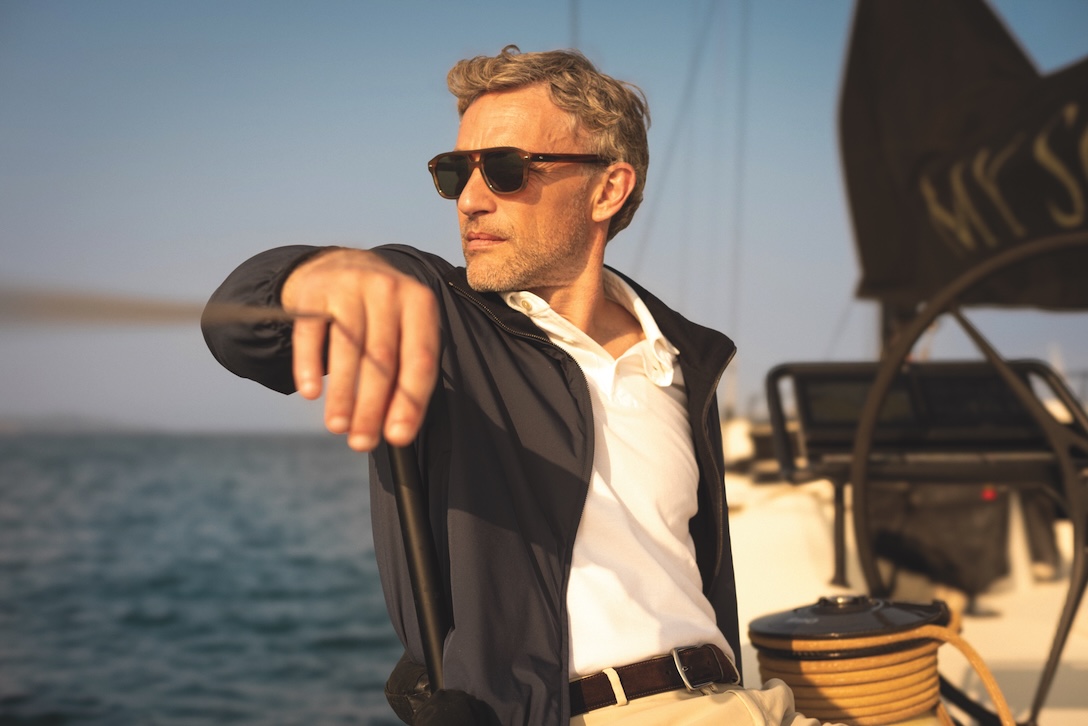
The same process happened on the water. A beloved reversible bomber, with knitted cashmere on one side and waterproof polyester on the other, was born from Pier Luigi’s need for a functional jacket to wear on his yacht. “It’s very light, doesn’t wrinkle, it’s warm, windproof,” he says. “It solves so many problems.”
He takes less credit for perhaps the brand’s most famous—and almost certainly most imitated—product, the white-soled suede Summer Walk loafers. “That was my brother,” he says. “When we were 20, 30 years old, we went sailing and there were only [Sperry] Top-Siders or Sebagos. But when the soles got worn, they got hard and slippery.”
The answer: a non-marking sole with grip—“like a tire you use in Formula 1 when it’s wet”—which Sergio got his bespoke shoemaker to sew to suede uppers. Eventually, they produced two versions: a loafer and the Open Walk, a model with a slightly higher top. “We discovered people were using them also for formal wear because they were so comfortable,” says Pier Luigi. “It’s really a successful story that started from product research.”
And if problem-solving can turn your family business into a giant of global style, clearly it pays to be a little selfish.
You may also like.
The Supercar of Pool Tables
In a rare fusion of Italian design pedigree and artisanal craftsmanship, Pininfarina and Brandt have reframed the barroom game as aerodynamic high art.
In the rarefied realm where leisure meets design, the latest object of desire doesn’t purr down the autostrada—it commands the room from a single sculptural base. The Vici pool table, a collaboration between Italian automotive legend Pininfarina and Miami’s bespoke table-maker Brandt Design Studio, reimagines the game with the same aerodynamic poise and artisanal precision that have graced some of the world’s most beautiful vehicles.
Named for Julius Caesar’s immortal boast—“Veni, vidi, vici”—this limited-edition series transforms billiards from casual diversion into a declaration of style. Every curve is deliberate, from the ultra-thin playing surface clad in tournament-grade Simonis cloth to the seamless integration of Italian nubuck leather and precision-milled metals. The effect is more haute sculpture than barroom pastime—yet it meets exacting professional standards.
For the true connoisseur, the debut PF 95 Anniversario edition celebrates Pininfarina’s 95-year legacy in just 95 numbered pieces. Finished in dark-blue lacquer with rose-gold accents and a flash of red felt, each table is discreetly nameplated—a tangible claim to an heirloom in the making.
“It’s not just about how it plays—it’s about how it lives in a space,” says Dan Brandt, the master craftsman whose work has long graced the world’s most exclusive interiors. Whether anchoring a penthouse salon, a members’ lounge or the main deck of a superyacht, the Vici is designed to stir conversation before the first break.
For those accustomed to Pininfarina’s sleek automotive silhouettes, this is a chance to bring that same lineage of movement, form and Italian refinement into the home. Only now, the horsepower is measured not in engines—but in the geometry of a perfect shot.
From pool to midcentury to Ottoman, we’ve got all the table angles covered at Robb Report Australia & New Zealand —plus more home-worthy pieces.






